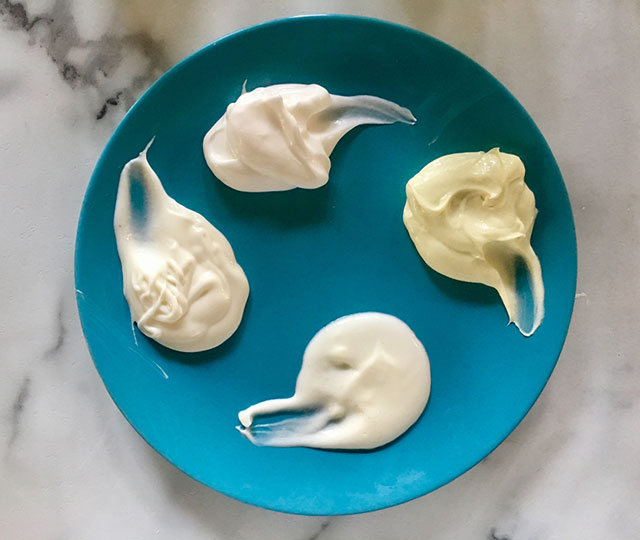
Perhaps you’ve found a lotion recipe, but you didn’t have all of the oils or butters that it called for. Or maybe, you wanted a lotion that was a little heavier for your skin in the winter or a little lighter for the summer. Or maybe you’ve been dying to try out hempseed oil, but can’t find a recipe. You’re in luck! Did you know you can swap any oil for any oil, any butter for any butter, any oil for any butter or any butter for any oil? Once you have this trick, you can make the perfect lotion for your skin needs!
Which oils and butters should you select? You’ve got a lot to choose from! First consider your skin needs. You might want a different lotion for your legs in the summer time than you would want for your elbows in the summer. Next, consider the skin feel you are going for. Do you want a lightweight lotion that absorbs quickly or a thick, occlusive cream? To help you choose your oils and butters, we have a guide filled with information, click here to view it! After you’ve chosen your oils and butters, pick a recipe and make a small test batch.
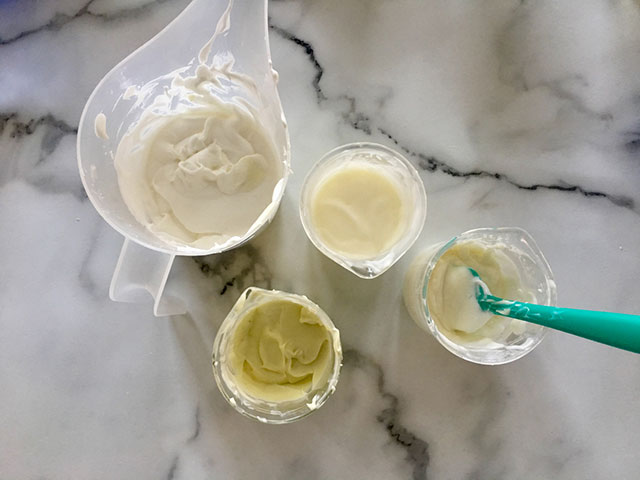
TEST BATCH STEP 1 – BASIC LOTION RECIPE
Let’s start with our Basic Body Lotion Recipe as a springboard for testing. Here is the ingredient list for this recipe:
Heated Oil Ingredients
- 0.53 oz / 15 g Shea Butter, Refined (5%)
- 1.7 oz / 48 g Avocado Oil (16%)
- 0.53 oz / 15 g Emulsifying Wax, NF (5%)
- 0.21 oz / 6 g Stearic Acid (2%)
Heated Aqueous Ingredients
- 0.32 oz / 9 g Glycerin (3%) (Available at pharmacies)
- 0.21 oz / 6 g Sodium Lactate Crystals (2%)
- 6.78 oz / 192 g Distilled or Deionized Water (64%)
Cool Down Ingredients
- 0.21 oz / 6 g Fragrance Oil or Essential Oils (2%)
- 0.1 oz / 3 g Germaben II Preservative (1%)
This recipe makes 300g of lotion which is a bit big for a test batch. For this purpose, it may be much more reasonable to make a 100g batch. To do this, take the percentage of each ingredient and use an equal number of grams. (For instance, this recipe uses 2% stearic acid. In a 100g test batch, you would use 2g.) This recipe calls for 16g or oil and 5g of butter for 21g total. You can substitute this with one or more of the butter or oil of your choice. You will want to use small heatproof cups, or beakers that are 200-300 mL in size to facilitate easy mixing. Additionally, it’s difficult to use a full-size stick blender to mix small batches. Instead, mix your batches with a mini cordless mixer.
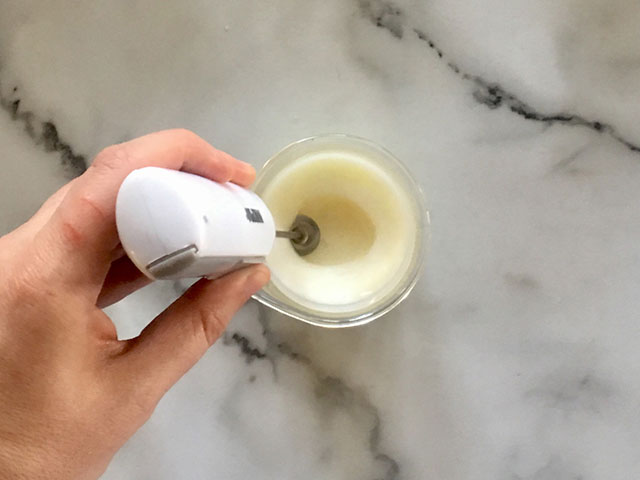
TEST BATCH VARIATIONS – SWAPPING BUTTERS & OILS
Let’s look at some examples of test batches:
Original Recipe:
Oils and/ or Butters Used: 5% Shea Butter and 16% Avocado Oil
Skin Feel: This makes a medium thick lotion. The shea butter gives it some richness and greasiness, but it’s balanced by the drier feeling of the avocado oil.
What This Lotion Is Good For: This is a nice general purpose lotion. It would be nice to use year round on lots of different skin types.
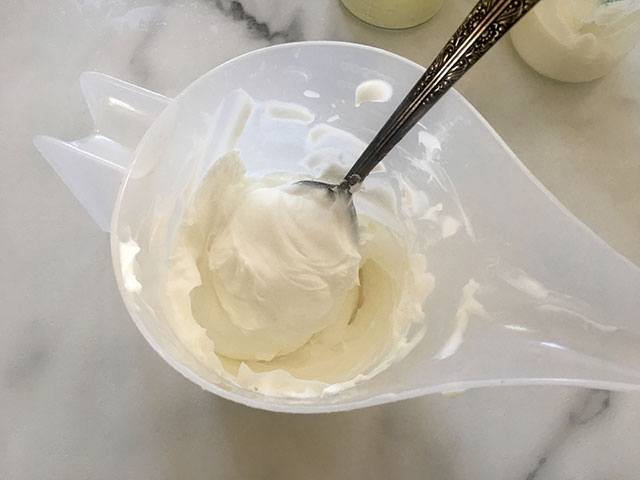
Variation 1:
Oils and/or Butters Used: 5% Mango Butter and 16% Hempseed Oil
Skin Feel and Other Properties: This cream is a tiny bit thicker than the original recipe but has a remarkably drier feel thanks to the polyphenols and tannins in both the mango butter and the hempseed oil. It’s also a little bit draggy from the mango butter. And check out that smashing green color!
What This Lotion Is Good For: This lotion is also a good year-round lotion for lots of types of skin. The big difference from the original is that is far less greasy, which you may prefer.
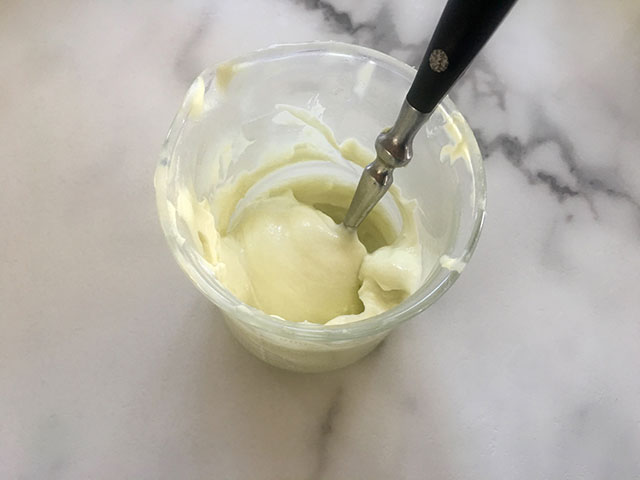
Variation 2:
Oils and/ or Butters Used: 5% Sunflower Oil and 16% Organic Golden Jojoba Oil
Skin Feel and Other Properties: While still fairly thick, this lotion flows a little more than the original. Both oils used are very lightweight on the skin and the jojoba oil absorbs quickly and feels dry. This lotion has a wonderful glide on the skin and a nice pale golden color.
What This Lotion Is Good For: This is a great lotion for summer legs! It glides over the skin and leaves a nice sheen without feeling heavy or greasy. Because sunflower and jojoba oils are non-comedogenic, this might be a great choice for post-shaving.
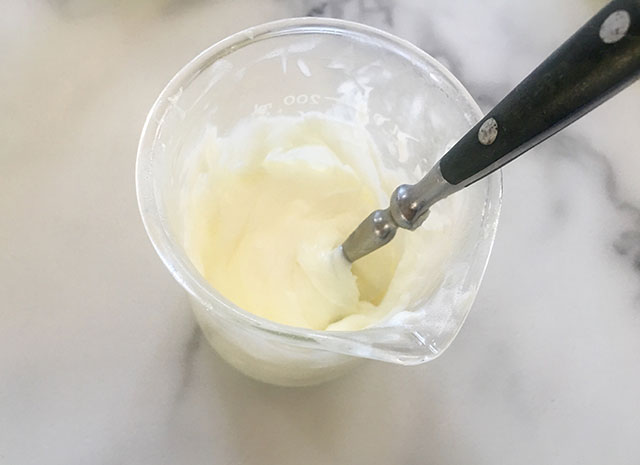
Variation 3:
Oils and/or Butters Used: 5% Cocoa Butter and 16% Shea Butter
Skin Feel and Other Properties: This lotion has a creamy-greasy feel (in a good way!) from the shea butter and a protective, occlusive feel from the cocoa butter. Because unrefined butters were used, you can smell an earthy, chocolately scent before adding the fragrance oil. Oddly enough, it’s not appreciably thicker than the original, despite using 100% butters. It is, however, a lot heaver on the skin.
What This Lotion Is Good For: This would be a nice cream for winter elbows, knees, and feet. The cocoa butter and shea butter would be great for preventing moisture loss in wintery skin.
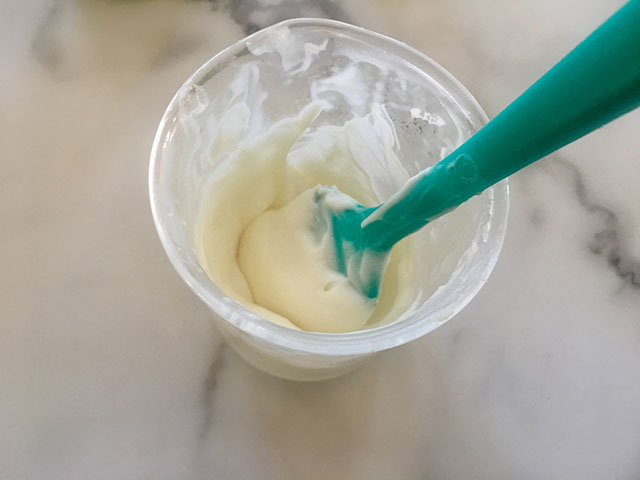
SHARE ON SOCIAL MEDIA
![]() Share this tutorial on Facebook
Share this tutorial on Facebook![]() Tweet about this tutorial
Tweet about this tutorial






